
On test Contest 67cs
Some yachts develop character, while others have it built in. Toby hodges went in search of heart and soul. We were on board Contest’s first new 67CS, a sensational new 67ft semi-custom model, and the first Contest designed by Judel/Vrolijk in the yard’s near 60-year history. We were sailing rapidly away from Palma, Mallorca with full main and asymmetric spinnaker shading the deck from the early sunshine. The wind continued to increase, into the mid-20s, bringing short, sharp waves with it as we headed offshore past the lighthouse. There was little we could now do, other than try and keep her sailing and looking good. It was time to speak to Jesús.
Contest wanted brochure photos from a helicopter and we wanted to test sail the boat so we had spent the previous evening planning it all to a tee. The problem is that the boat needs to look just so for the pictures, even if a little artificially at times. The upside was that once the photos were done, we would have a long day on the boat sailing, anchoring and living aboard in a variety of conditions, plus some resultant fantastic pictures. But of course, the wind pays no heed to plans and schedules.
Once the call was made to Mallorcan photographer Jesús Renedo confirming that we were in the pre-arranged place and sailing at full speed, the chopper would take off and be overhead in minutes. We needed to be on a good angle with the kite set. Knowing it all had to work like clockwork before the allotted helicopter slot elapsed heightened the nerves on board. The wind was forecast to start relatively light and pick up during the day – hence it did the opposite. By 10.00 Force 6 to 7 gusts were barrelling down the cliff edges nearby.
Thundering along under the big red asymmetric at 10-12 knots, preparing for the noisy imminent arrival overhead, I took the helm and tried to point her up to get some more sun on the deck for the pictures. In a 25-knot gust, we eased the main too little, and a dramatic flapping of sails accompanied our rapid heel change – evincing some rather concerned looks from the model in the cockpit. Keeping this over-canvassed yacht’s bow firmly down would be the key to a successful shoot in these conditions.
Packing too much punch?
We dropped the kite and headed up on to a close reach, until the helicopter departed and boat test duties commenced. Gusts of up to 30 knots rolled over the decks as we headed upwind, so to ease the load on the helm, we bent a reef into the vertically battened in-mast mainsail and furled some genoa.
With full canvas up in over 20 knots, it’s testosterone time – it’s a workout on the wheel – and you need a crewmember attentively manning the mainsheet to maintain cooperation between helm and vessel. Most cruising sailors will welcome the communication from the Contest’s rudder: it lets you know when she’s pushed. I have become accustomed to twin rudder set-ups on yachts of this size now, yachts where the power is not communicated as directly as the single blade set up. A glance at the size of the winches (size 88 for the primaries) and deck gear is a telling reminder of the loads she generates and the need to respect these loads. It should also be noted that the test boat had the full extra performance options of a Hall Spars carbon rig and SCR rigging, plus 3Di sails.
As the wind began to ease later in the day, we were able to set full sail again in 15 knots gusting to 24 knots over flat water. During that afternoon and evening sail, the boat felt alive. With the correct sail set-up you can really drive her hard and point her up through the gusts like a performance yacht (upwind at eight to eight-and-a-half knots). It became clear that the 67CS has the legs and consistent speed to get places quickly.
“It’s a Judel/Vrolijk design, so one level higher in performance to past models,” says CEO Arjen Conijn. “We worked very hard to combine this with the safety and comfort that are the cornerstones of our fleet. In past days north European yards focused on all-weather boats. But now, with more clients in the Med, we need to be able to sail in light winds too. It’s not just about surviving on the boat.”
I have seen the 67CS sailing in five knots of wind off Cannes, so I know that she’s a slippery design. Indeed, as we headed back to Palma at the end of the test day, the evening breeze had dropped to ten to 15 knots and the Contest really excelled. With the Code 0 set, we reached along at nine and a half to ten knots, up to 10.5 knots in the gusts, the speeds as consistent as they were impressive.
The question is whether Contest has given her too much performance for an ocean cruising yacht? I don’t think so. She has almost exactly the same sail area-todisplacement and displacement-to-length ratios as the new Oyster 675. Granted, these may be slightly more performance oriented figures than past bluewater models from these yards, but I’d rather a boat be able to sail in light airs. Of course, the test boat had upgraded rig and sails, which certainly helped get the most out of the breeze, but the key is to make the boat easy to tame and manage. And that’s where the push-button furling systems and deck layout comes into play.
The cockpit and deck layout of the Contest, particularly around the helm consoles, is excellent. For a centre cockpit yacht, it’s a very practical set-up with good visibility forward from the helms. The ability to stand outside the coamings when helming, or sit straddling them, and see along the windward or leeward decks to the telltales and beyond, will rate highly with active sailors. And she’s a yacht you’ll want to stand and helm for long periods – there are no helm seats. Angled foot wells provide the ideal support while standing.
The central mainsheet and outboard primary winches are mounted well within reach of the helm. “This is the base from which anything can work – from there you can orient it more towards short-handed or performance,” says Conijn.
For a yacht with such clean lines, I would like to have seen stowage designed in for the sheet tails. Also, the test boat had vertically mounted winches on the base of the mast. With little space between the winch and jammer however, it was a slow process to hoist the gennaker. For jobs that may involve going aloft, I would opt for powered winches on the deck, each side of the mast.
Barring the fancy sails and rigging, Conijn maintains that the deck layout itself is reasonably standard and that it’s the interior that is highly customised. And what an interior this yacht has.
The jazz club
A chief benefit of moving to the custom end of the yacht building scale is the ability to create something unique and personal. It’s one thing to add that bespoke touch to a production yacht, it’s another to create character and soul. The test boat possesses more character and soul than most other new yachts; the impact on stepping below for the first time was nothing short of arresting.
“The interior is where the owner put his real soul into the boat,” says Conijn. He reportedly wanted to create a jazz club style Cuban atmosphere, a theme well captured by interior designers Wetzels Brown. The eye is drawn to the red leather panels, the showpiece humidor set into the saloon’s coffee table and the spit-andsawdust style smoked oak floor.
Then you notice the detailing, from the traditional bronze fittings used on all the furniture to the lyrics of the owners’ favourite jazz song stitched into their bedclothes. This yacht’s interior conjures the old-world atmosphere of cigar smoke and jazz with a clean, contemporary twist.
Spend some time below on the 67CS at sea, and there’s another very appealing quality. She is a truly calming yacht. It’s quiet and peaceful, whether under sail, motor or at anchor. This is down to the aesthetic character of the test boat as well as to the engineering, which is up to superyacht standards.
When we visited Contest’s Medemblik yard last June, we were impressed with how much construction takes place on site. This offers Contest the versatility to cater to most clients’ wishes while ensuring a high standard of structure and engineering in the yachts. For the 67CS, the company has stepped things up yet another notch.
Contest houses all of the 67CS’s machinery in an insulated central box beneath the saloon floor. The weight of the generator, aircon, hydraulics, batteries etc is centralised, with the tanks located either side. The engine room is located directly aft, also beneath the saloon. Access to the water separators and fuel filters for the engine and the genset are located beneath the first step down to the galley.
The result is refreshingly peaceful. Even when motoring along at 8.5 knots, at a time when you would expect noise and vibration in the aft cabin, there was only the faint rushing noise of cooling water.
The electrical components are housed in a central walk-in technical room beneath the cockpit sole. “What we learnt is that this kind of equipment doesn’t like heat – so we always have a separate electrical room,” Conijn explains. I saw the incredibly complex amount of wiring that leads into here while the yacht was in build. To have it all intelligently laid out and neatly contained – the switchboards, distribution panels, chargers, inverters etc all in one area – brings peace of mind.
Layout options A variety of different layout options are available, including the option to have a fore or aft owner’s cabin. The test boat was built with an aft master cabin, and it’s easy to see the appeal of this configuration. There is 7ft headroom surrounding the island berth and an escape hatch above, abundant hanging stowage in the lockers furnishing the passageway forward, and with the yacht heeling, I was able to gaze at the horizon through the hull window from one of the two forward-facing sofas. And again, I noted the calm nature of the boat.
On the test boat, the two en-suite guest cabins forward of the saloon are near identical, containing compact double berths with leecloths and tall wardrobes. The entrances are tight (particularly to port) and there are no hull windows, but the cabins are certainly comfortable and the hatches above let in natural light.
The Pullman crew cabin in the forepeak can be accessed through the interior via the shower of the port-side guest cabin, but has its own private deck hatch too. Most of the layout options include this forepeak crew cabin, apart from the three-guest-cabin version, which has a passageway style galley and a Pullman for the crew located near the companionway – a position occupied by the day heads on the test boat.
The U-shape galley has practical stowage space, particularly in the surrounding raised lockers. However it is the one area of the boat where storage allocation was not overly generous (ocean sailors may wish to address that at build stage), although there are useful lockers in the sole and below the sofas too for extra provisions.
The navstation is the ideal size and location, with a comfortable angled seat that has an armrest to help you wedge yourself in on either tack. A plotter and instruments are mounted on a raised panel, within touchscreen reach of the seated position.
view pdf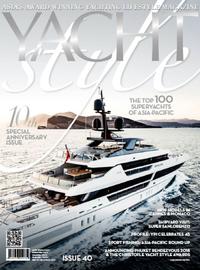
 28/11/17
Contest 67CS: the bluewater game-changer
see article
download pdf
28/11/17
Contest 67CS: the bluewater game-changer
see article
download pdf
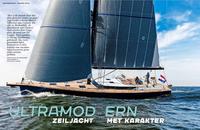
 09/05/17
Ultramodern zeiljacht met karakter
see article
download pdf
09/05/17
Ultramodern zeiljacht met karakter
see article
download pdf
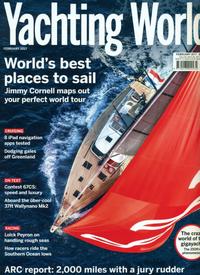
 27/02/17
Contest 67CS: speed and luxury
see article
download pdf
27/02/17
Contest 67CS: speed and luxury
see article
download pdf

 19/01/17
Contest 67CS Free Jazz
see article
download pdf
19/01/17
Contest 67CS Free Jazz
see article
download pdf
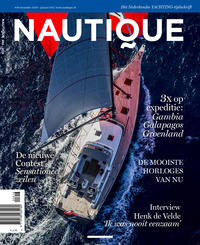
 01/12/16
De nieuwe Contest: sensationeel zeilen
see article
download pdf
01/12/16
De nieuwe Contest: sensationeel zeilen
see article
download pdf
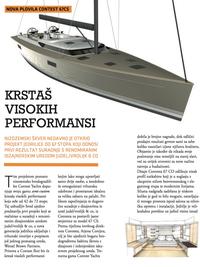
 29/12/14
Novila plovila Contest 67CS
see article
download pdf
29/12/14
Novila plovila Contest 67CS
see article
download pdf

